It’s a Fact, Hummingbirds are Cool
**We’re getting ready to put out Hummingbird Feeder out for the spring…we expect to see the first bird in the next week or two. It has me thinking of birds, which means…I thought I’d perch on a different branch for this post…**
BecauseItzThere is almost entirely a hiking blog, but sometimes we’ll indulge in some of our other passions here, as long as they are not too far off the subject. One of these is bird watching, which certainly counts as an outdoor pursuit. We greatly enjoy attracting wild birds to our backyard feeders.
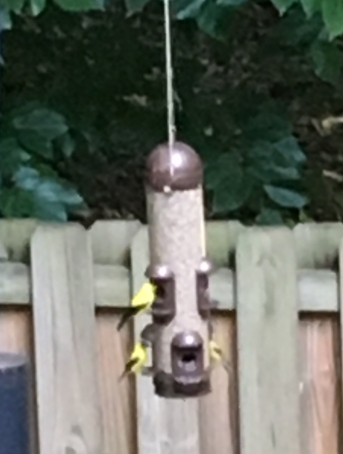
Of course, as anyone who has ever hung a feeder outside their window will attest, it’s a lot more work then it sounds. Attracting birds is not difficult. The problem is how to do it withOUT attracting the various other things that want to eat your handouts…namely, other crappy birds and rodents. It took Sylvia and I a good two years to finally declare victory in the war on squirrels. We have still not managed to achieve victory over our primary airborne foe and arch nemesis…the dreaded common grackle.
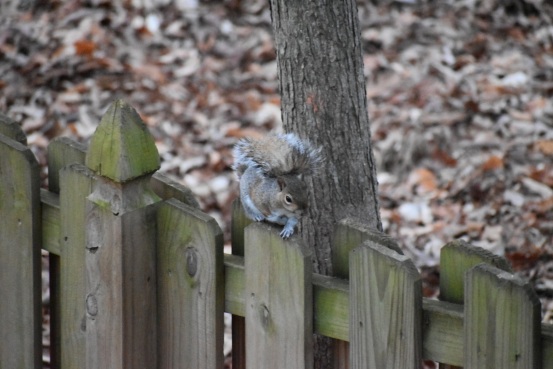
With a little work, though, just about anyone can attract a variety of fine wild birds to their backyard or deck. Even people who live in city limits can do it.
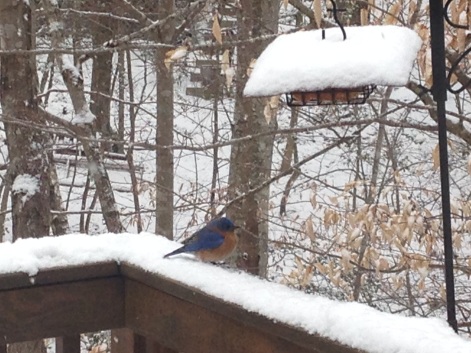
One of our favorites is the Ruby Throated Hummingbird. Since moving to our present home in North Carolina, we have been able to attract Hummingbirds to our deck feeders every year. We have had years with almost constant sightings and some with fewer, but never had a year when they did not show up.

Hummingbirds are common throughout North America, from the Mexican border all the way up to Canada. Most species migrate south during the winter season, sometime travelling long distances. They are most common in areas with plentiful supplies of nectar producing wildflowers and water, but can be found almost anywhere, even in the hearts of cities. It has been conjectured that in their ceaseless quest for new food sources, virtually every square foot out outdoor space in America is examined at least once a year by a hummingbird.

Drawing hummingbirds to your backyard is actually quite easy. All you ready need is a feeder and the appropriate know how.
Step One: Purchase a feeder

First step is to purchase a feeder. You can find a variety in almost all hardware and general stores. There is no need to purchase an elaborate model; the Hummingbirds aren’t picky. Just be sure that the model you pick is durable and easy to clean. A lot of decorative ones are in my opinion too delicate, or have openings so thin they cannot properly be cleaned.
Many are colored bright red. While this helps to make them visible, there is no particular need to do so. Most hummingbirds have come to understand that a feeder is a source of food and will rigorously examine anything that even looks like a feeder. A trick that I have used to the past is at the beginning of the season, tie a red ribbon the the feeder as a sort of flag. but mid season word will be out and you won’t need it.
My experience with birds in general is that they quite fast to discover new food sources and not shy about trying.
There is no particular rule about where to hang the feeder, but I recommend close proximity to a window or glass door so that you can observe them. My experience with hummingbirds is they are canny fliers and seldom smash headlong into windows like other birds will. Very often hummingbirds will come right up to our kitchen door and fly along the glass peering in, as if window shopping what might be inside. But if this does become a problem, you can purchase unobtrusive images that can be attached to glass to warn off the birds.
If you can hang the feeder either on a long pole or wire that supports a baffle to keep squirrels and pesky ants at bay, do so. You will save yourself a lot of trouble. Sylvia and I are forced to bring our feeder indoors at sunset or else risk having it raided by raccoons.
Rustle Yourself up Some Grub
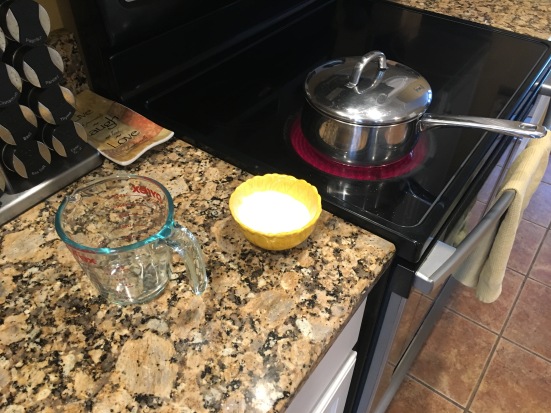
Many stores sell a sort of reddish syrup advertised as hummingbird food. The quality and nutritional value of this food is debatable, with many authorities arguing that it does long term harm to the birds. But at any rate, there is no need to spend money on prepared foods at all. You can easily make your own at home.
In order to do this, all you need is a bag of pure can sugar, some water, a pan and a stove. Note that it must be natural cane sugar. I always use Dixie Crystals.
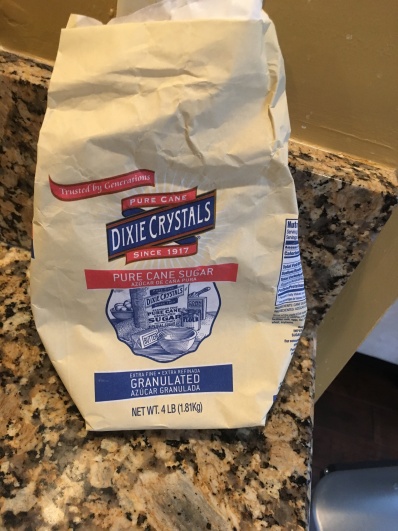
I am not sure if there’s a Yankee Crystals up north but anyway…don’t use regular granulated table sugar, the hummingbirds will not like it, and your feeders will get few visits. They prefer their nectar to be organic.
Just follow the “one-four” rule. Heat four cups of water to a boil in a saucepan, then remove the water from the heat and pour in a single cup of sugar. Stir this in till it dissolves, let it cool, and…presto! You’ve got yourself some hummingbird grub.
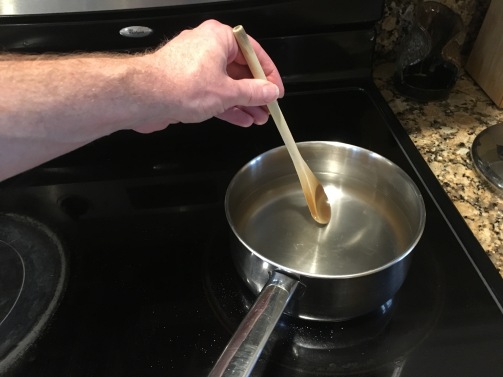
Again, don’t be concerned that the mixture is colorless (it looks identical to water.) The hummingbirds do NOT care what color the mixture is…in fact, their native food source, nectar from wild flowers, is clear.

Simply put this in the feeder, hang it out in season, and within days, you will likely have your first hummingbird…though you may not immediately see it. Even thought they are omnipresent, hummingbirds are so tiny and elusive that they are seldom seen except right around their food sources.
Maintaining the Concession Stand
Hummingbird nectar spoils very quickly in warm weather…which is precisely when hummingbirds are most active. In summer you must change the nectar at least twice a week, or else you are doing the birds more harm than good. As with all bird feeders, keeping them clean is a priority. Clean them with soap and hot water…a long, thin brush with stiff bristles helps greatly. Be sure that whenever you handle bird feeders (or any area where birds have frequented) wash your hands thoroughly afterwards, and keep feeders separate from areas where food is prepared or dishes washed. Birds have been known to spread disease, but sensible precautions can reduce the risk to near zero.
Open for the Season
We bring our hummingbird feeders in for the winter. Generally, we place it outside around April first and bring it in around October first. The earliest I have ever seen a hummingbird in these parts is first week of April…they last, the closing days of September.
These early arrivals and late departures are almost certainly migrants from further north. Our own hummingbirds leave us almost the same day each year…on or around September 10th. This is a bittersweet day for us, knowing that yet another hummingbird season is coming to a close. Our winged friends have left us for warmer places…But it’s also a sign that, in the Carolinas, the hot weather is ending and hiking season (our favorite time of year) is about to begin. One things ends, another begins.
We have no real idea when our local birds actually arrive…sometime in late April, we think. For the first few weeks we see little of them, they are too busy mating, nesting, and raising young. Sightings are infrequent during this period. But by mid July mating season is generally over, and heavy visitation starts to occur and continues all the way until the hour they leave, with birds visiting all day long and sometimes literally camping out by the feeder…perching on a nearby branch watching their food sources carefully and defending it against would-be rivals.
One thing most people are not aware of is how aggressive hummingbirds are. They are perhaps the most belligerent type of bird on the planet, fanatically protecting their food source against other hummingbirds and routinely engaging in dramatic aerial combat. Each bird feeds with a wary eye cast over its shoulder, expecting to be dive bombed at any moment. They are entirely solitary creatures…they mate once, the male has no part in the upbringing of the young. It is every bird for itself.
We have even tried putting out more than one feeder to stop all the fighting but…it doesn’t do much good. At least the aerial dog fighting is something to watch.
We have seen some glorious hummingbirds around the world…huge, wonderful ones in the jungles of Peru and Mexico, and swarms pressing around feeders in Texas and California. But nothing beats bringing them right to your backdoor. Start feeding them today and you too can enjoy the benefits of nature.

Some facts about hummingbirds:
- Rudy Throated hummingbirds are the only species native to the eastern United States, barring a few migrants that drift through
- Only the male Ruby Throated displays the visible scarlet neck marking that gives the species its name
- Hummingbird nests are often made out of spider webs (we saw on in the courtyard of a monastery in Peru!)
- The male also has a distinctive high pitched sound to its wings and (so we have observed) has a different range of behaviors than the females
- Though most hummingbirds migrate, some in warm areas stay year round. A few colonies on North Carolina’s outer banks may fit this category.
- Almost all hummingbirds supplement their diet of nectar by eating small insects on the side
- The adult hummingbird heart can beat 1000 times a minute
